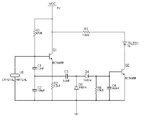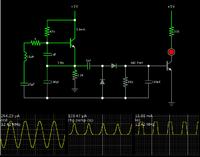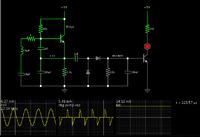Eliphas Levi
Newbie level 4

Well, hello to one and all. This being my first post I face a dilemma whether to add more pleasantries or get right down to business, I choose the latter and please correct me if I have been found wanting. The above circuit is an oscillator which I picked up on the internet and used. All seemed well till I realized that the frequency which I see on the oscilloscope is a little more than double the frequency of the resonator used. So I thought that the problem must with the resonator and that the resonator must perhaps (against all odds) be marked by the manufacturer as half the frequency of which it actually is. So I changed the resonator(crystal) but still this phenomenon perseveres. So I came to the conclusion that there is something amiss in my understanding of this circuit and any comments which you may provide will be helpful.
PS : I did not have the 1N914 diodes so I used 1N4007 simply because I had no other diode knowing full well that 4007 is a rectifier diode and 914 is a small signal diode. I did not expect results but fortunately I got the wave. Later on I replaced the 4007 with 4148 and surprisingly I did not get any wave. If anyone would care to comment on that too, it would be simply delightful.



